
|

|
Riving
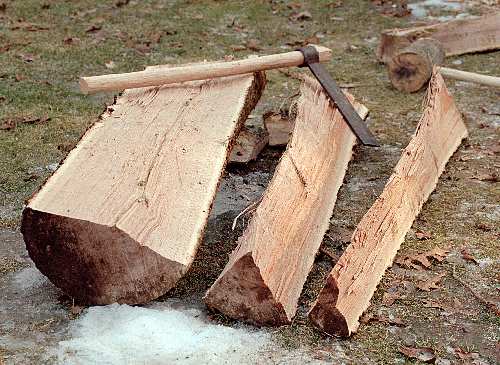 |
Viking-age smiths used the process known as riving to reduce a tree trunk to planks or to other useful articles. Rather than sawing the wood, they split it. As a result, the grain of the wood follows the piece being fabricated, creating a much stronger item than if it had been sawn. It's one of several reasons why thin-hulled Viking ships could withstand the rough seas of the North Atlantic. The process repeatedly splits the log, first into halves, then quarters, then eighths, as seen in the photo. |
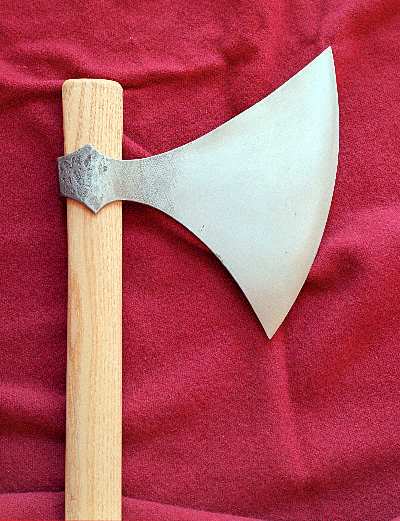 |
I recently received a two-handed Viking axe from James Austin, quite a beautiful piece of work. Jim sent a haft along with the head, but Matthew Marino, a master woodsmith (and the smith who created many of the wooden replicas seen on the Hurstwic site), wanted to fabricate another haft using Viking-age tools and techniques. This photo album shows how he started with a tree trunk, and using nothing but hand tools, ended up with a perfectly fitted haft. |
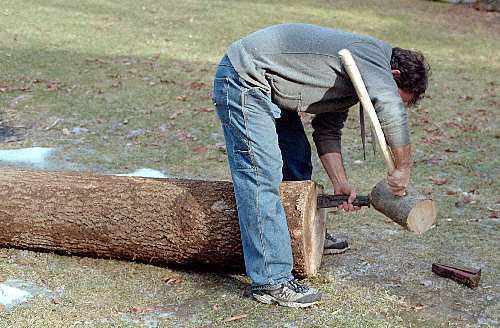 |
The process starts by scoring the face of the log along the line where the split is desired. For the project, Matt used a piece of white oak, a blow-down in a recent storm. |
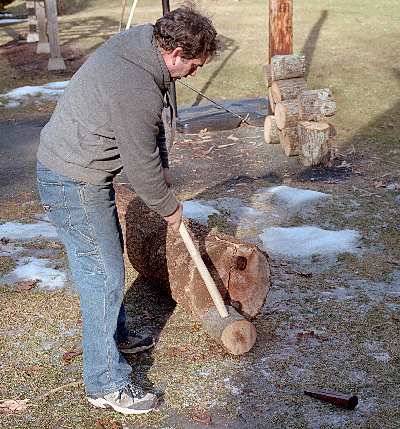 |
Wedges are driven into the face of the log to make the split. |
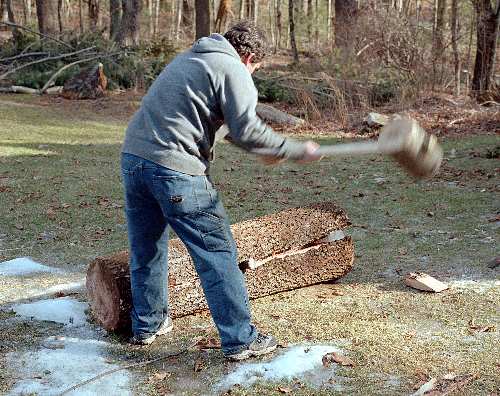 |
As the split opens, wedges are driven into the side of the trunk to complete the split. |
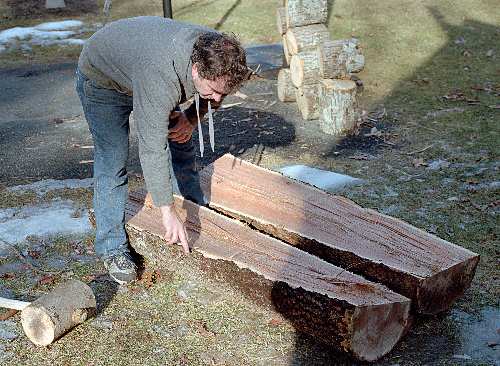 |
Matt examinines the split log for imperfections, and to check for straight grain. |
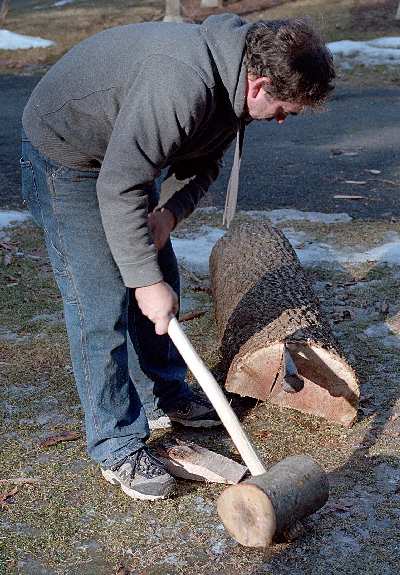 |
The splits are made not in the physical center of the log, but at the center of the ring structure. This tree grew on a hillside, so one side grew faster than the other. Thus, the center of the rings is not in the center of the tree. For the haft, Matt wants to use the densest part of the tree, the part with the rings that are close together. |
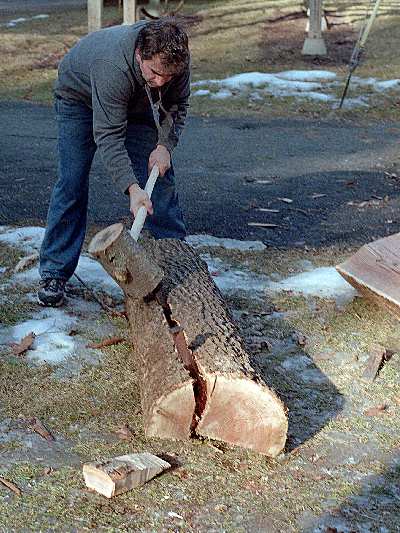 |
Finishing the second split. |
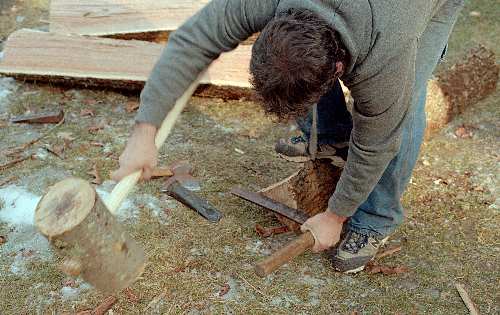 |
Matt starts the fourth split. Now that the workpiece is getting close to the size of the finished article, he has switched from using wedges to create the split to using a froe. The evidence for the use of froes in the Viking-age is fragmentary. |
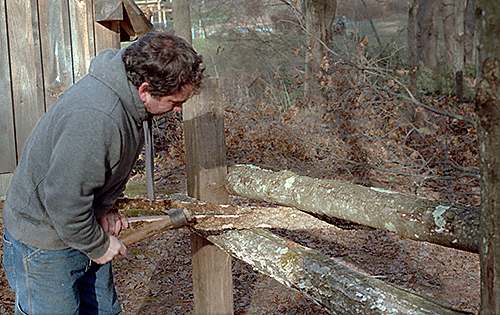 |
Because the piece is now getting close to the finished dimensions of the haft, this last split must be carefully controlled. Matt makes the split using the froe, and he uses a brake to precisely control the direction of the split. He can steer the split by applying pressure to the wood with his left hand, which compresses the grain, changing the properties of the wood and the direction of the split. |
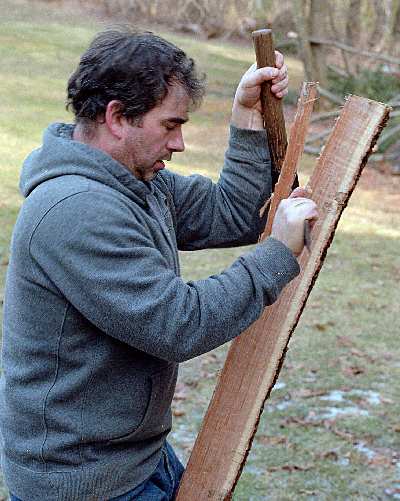 |
The wood at the center and the outside of the log are useless. Matt removes the pith at the center. |
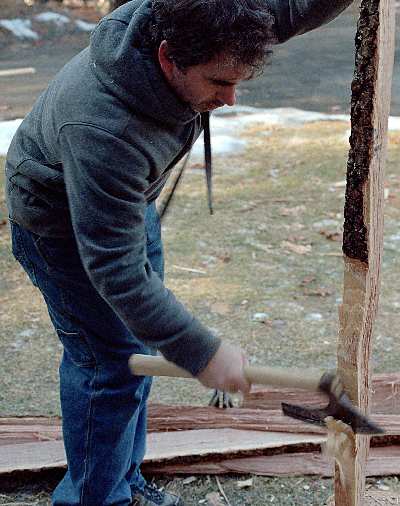 |
Matt removes the bark and sapwood and rough-shapes the piece with an axe having a curved head, with a bend away from the central axis of the haft. The curve makes it less likely that the axe will dig in to the workpiece. |
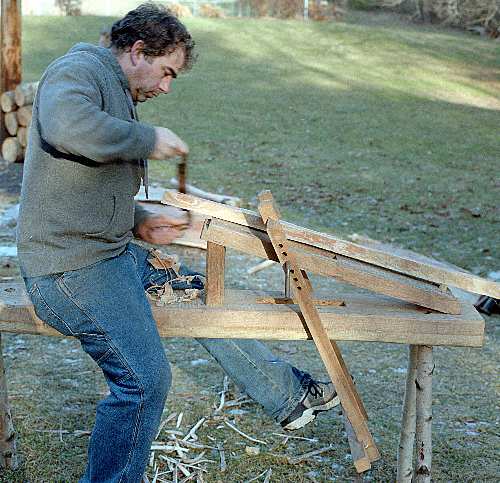 |
Matt uses a shave horse to clamp the workpiece while he shapes it. There is not a lot of evidence for their use in the Viking age. The first solid evidence comes for their use comes at the end of the Viking age. Regardless of how it's done, the piece needs to be held solidly in place for shaping. |
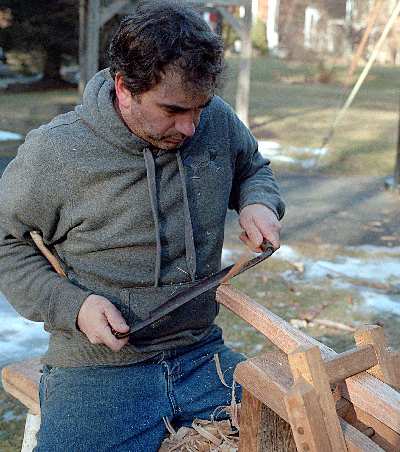 |
Matt uses a draw knife for shaping. The knife must be kept exceedingly sharp during the shaping process. |
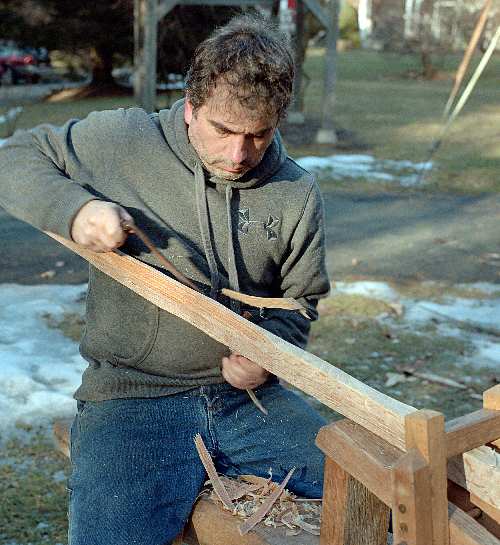 |
The wood shavings fly from the draw knife. |
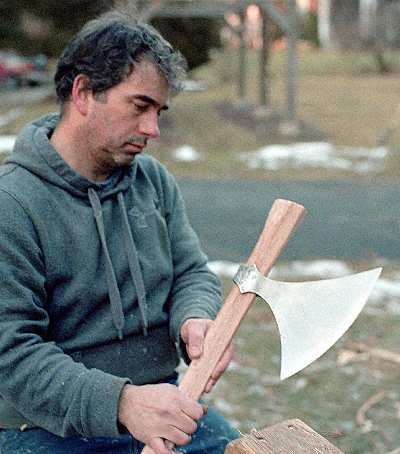 |
Matt tests the fit. The eye of the axehead and the haft are tapered, so when slid up the haft from the butt end, the axehead fits tightly on the haft and can not fly off, as long as the haft and head remain intact. |
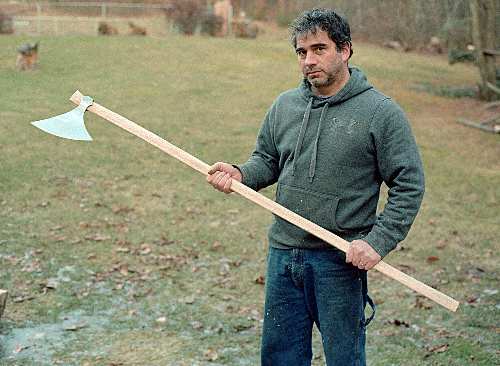 |
The axehead installed on the finished haft, ready for some test cuts. The axe was a wicked beast in cutting. Making a few cuts with the axe into some of the oak logs on the site made me realize that a leg bone would be no match for this axe. We plan to do more extensive test cutting in the near future. The wood was worked green, so first the wood must dry which will require some final reshaping to perfectly fit the axehead. |
|
|
|
|
|
|
©2012-2025 William R. Short |